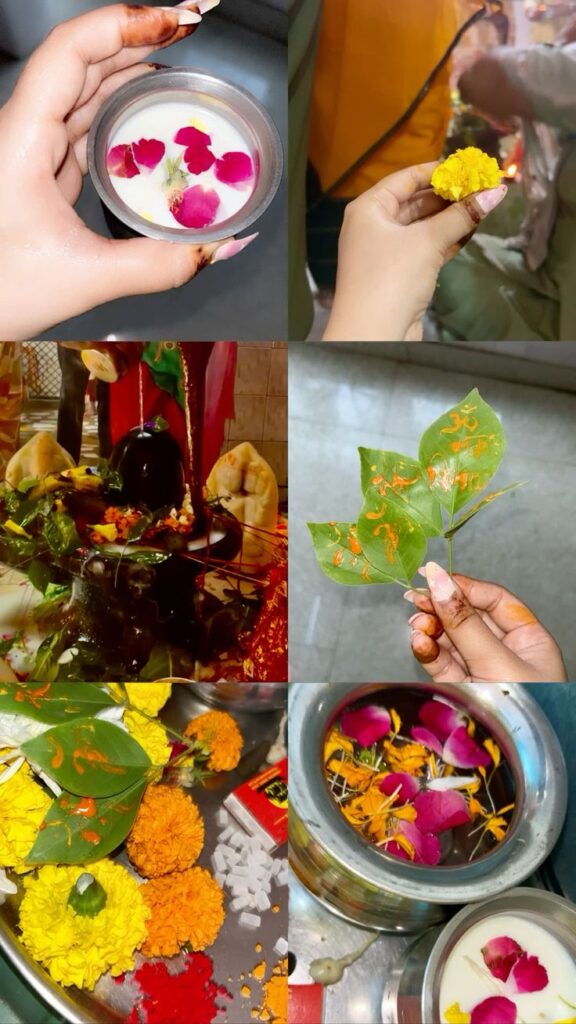
The Spiritual and Cultural Importance of the Holy Month of Sawan
The month of Sawan, also known as Shravan, holds a special place in the hearts of millions of Hindus across India and Nepal. It is the fifth month in the Hindu lunar calendar and is considered one of the most auspicious times of the year. Dedicated to Lord Shiva, the divine destroyer and transformer among the Hindu Trinity, Sawan is filled with devotion, fasting, rituals, and vibrant festivities. This sacred month generally falls between July and August, marking the peak of the monsoon season.

1. Spiritual Significance of Sawan :
According to Hindu mythology, the month of Sawan is extremely dear to Lord Shiva. It is believed that during this time, the churning of the cosmic ocean (Samudra Manthan) took place. During this event, a deadly poison called “halahala” emerged, which Lord Shiva consumed to save the universe. To reduce the effect of the poison, devotees offer water, milk, and bilva leaves (bael) to the Shiva Linga during this month to honor and soothe the Lord.
Mondays in Sawan, known as Sawan Somvars, are especially powerful. Devotees observe fasts and offer prayers in Shiva temples, seeking blessings for health, peace, and prosperity. It is believed that sincere worship during this month brings fulfillment of wishes and liberation from past sins.

2. Fasting and Devotion :
One of the most popular rituals during Sawan is Sawan Somvar Vrat (Monday fast). Devotees, especially women and unmarried girls, observe fasts with great dedication. It is believed that observing these fasts with pure heart can bring marital happiness, good health for the family, and spiritual upliftment. Many unmarried girls also pray for an ideal life partner, just like Goddess Parvati prayed and fasted to win Lord Shiva as her consort.
On these Mondays, people avoid eating salt, grains, or non-vegetarian food, and many consume only fruits and milk. Temples are beautifully decorated, and Shiva bhajans (devotional songs) resonate in the air.

3. Cultural Celebrations :
Sawan is not just about spiritual devotion but also about cultural richness. In North India, especially in states like Uttar Pradesh, Bihar, Jharkhand, and Madhya Pradesh, women gather to sing folk songs, apply mehendi (henna), and swing on decorated jhulas (swings) tied to trees. The green color, symbolizing life and prosperity, becomes a theme in clothing and décor during this season.
Festivals like Hariyali Teej, Raksha Bandhan, and Nag Panchami also fall during the Sawan month, adding to the festive spirit.
4. Kanwar Yatra: A Divine Pilgrimage :
Another iconic tradition during Sawan is the Kanwar Yatra. Thousands of Lord Shiva devotees, known as Kanwariyas, undertake a pilgrimage on foot to collect holy water from the Ganga River, which they then offer at Shiva temples, especially at the Jyotirlingas like Kedarnath, Kashi Vishwanath, and Baidyanath Dham. This yatra is a powerful expression of faith, endurance, and devotion.
5. Connection with Nature
The month of Sawan also coincides with the monsoon season. It symbolizes fertility, rejuvenation, and the blossoming of life. The rains bring relief from the summer heat and fill the rivers and lakes. Just as the earth quenches its thirst during Sawan, the soul too seeks spiritual nourishment through prayers and meditation.
Conclusion :
The month of Sawan is not just a period in the calendar—it is a time of deep spiritual reflection, cultural vibrance, and heartfelt devotion. Whether it’s the echo of “Har Har Mahadev” in temples, the sway of swings on neem trees, or the silent prayers of fasting devotees, every moment in Sawan carries divine energy. Embracing the spirit of this month brings peace to the mind, strength to the heart, and a deeper connection with the divine.




